Border-crossing dentist saved the best for last
After 34 years of repairing teeth, no one would have blamed Stillwater, MN dentist Fred Kalinoff for taking a year off to rest, reflect, or just plain golf.
But the drill, probe and forceps are still in his hands — the only changes being his floppy orange fishing hat, and a different stream of clients…ones that could never pay him.
“It took me 10 minutes to get used to retirement, and after six months, I was having such a good time, I realized I should have retired a long time ago,” he said by phone, fresh off a plane from Guatemala.
Since retiring — or shall we say re-firing — in 2003, Kalinoff has made more than 50 service trips to Mexico and Guatemala, filling cavities and treating infections for the poorest of the poor, including the indigenous people from the Copper Canyon that we introduced in Mariano’s story earlier tonight.
Dr. Kalinoff first learned of the Tarahumara Indians in 2001 while backpacking in the Copper Canyon, that cavernous part of the “Mexican Rockies” extending southeast from Arizona where he and his wife Tricia have a second home.
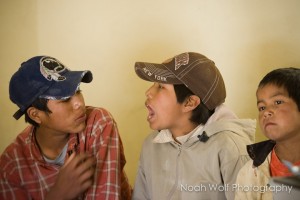 Sadly, because of their remote location, “The Tarahumara don’t always get the medical help they need,” he says, and their plight was compounded last year by 300 consecutive days of drought that run through our winter and spring seasons.
Sadly, because of their remote location, “The Tarahumara don’t always get the medical help they need,” he says, and their plight was compounded last year by 300 consecutive days of drought that run through our winter and spring seasons.
During this time, the federal government and Red Cross try to address the starvation with rescue trucks filled with corn and beans, but health and education services are poor. Then, mother nature plays a trick and dumps torrential summer rains.
Getting to this Canyon region can already be an adventure, said Kalinoff, but thunderstorms and mudslides pose an additional danger.
At first Kalinoff did solo missions, but soon he partnered with LIGA (Lee’-gah) International,” known as the “Flying Doctors of Mercy,” based in California, for whom he has lead missions tirelessly. “We wait until the monsoon season is over and then fly in small planes from the Arizona-Mexican border.” One LIGA pilot crashed and died this year.
Yet, despite the weather and risk, Kalinoff’s groups complete at least four trips to the Copper Canyon and one to Guatemala each year, serving about 200 children and adults per mission. The outreaches have doubled as popular, supervised field practice for dental students from the University of Minnesota and Boston University, many of whom have been inspired to return beyond their initial trip.
Generally the teams are welcomed with open arms. “But you hear real discrimination from local mestizo (or mixed blood) Mexicans against the Tarahumara,” said Kalinoff. “One Mexican local even told me, ‘They are not really people.’”
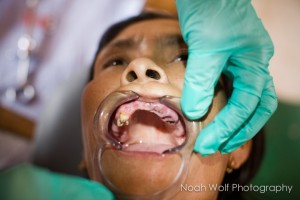 That kind of insensitivity led to the only incident of fear or reticence Kalinoff has had with the peace-loving Tarahumarans, he said. “If you can imagine this, a teacher introducing our services to his students said we were coming in to extract all of their teeth!”
That kind of insensitivity led to the only incident of fear or reticence Kalinoff has had with the peace-loving Tarahumarans, he said. “If you can imagine this, a teacher introducing our services to his students said we were coming in to extract all of their teeth!”
Dr. Kalinoff stores dental chairs, air compressors, a generator and other supplies at a lodge in the Canyon’s highlands, and visits a dozen villages in that region within a five-hour radius.
Only hours away Mexican army patrols burn marijuana fields in this most dangerous Mexican state called Chihuahua, where one-third of the more than 46,000 Mexicans have been murdered since the federal government began challenging drug cartels in 2006.
While they are relatively safe on their missions, fear of cartel violence has recently caused greater reticence, he admits. But Kalinoff and his groups of volunteers keep their heads down and their drills humming. “The worst part for us is the lack of plumbing and outhouses that make you sick or faint,” he said.
“Our first aim is to relieve pain and clear up infections,” said Kalinoff. “On a typical trip we may extract problem teeth and provide fillings and sealants to prevent tooth decay to students at a boarding school,” said Kalinoff. “In that case we will eat and sleep overnight on their school floor.”
Meanwhile, often grizzly adult cases are brought to him. He gave one example from a trip to Guatemala just last week.
“Our very first patient there was a gal, about 40 years-old, wheeled to us, looking more dead than alive. Her face and neck were terribly swollen, so much so we worried it would cut off her breathing. She had a hole in the lower right side of her jaw. This is literal. No exaggeration. It was about two inches by one inch, draining copious amounts of puss.”
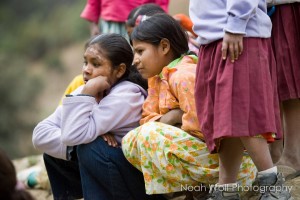 Extreme as this sounds, it’s simply a blast from the past, said Kalinoff. “If you look at medical history from 100 years ago in the U.S., you see how many people died of blood infections caused by abscessed teeth.”
Extreme as this sounds, it’s simply a blast from the past, said Kalinoff. “If you look at medical history from 100 years ago in the U.S., you see how many people died of blood infections caused by abscessed teeth.”
“We got her on major doses of intravenous antibiotic, and in five days, when we left, she was stable and looked pretty good. Our top goal is to prevent that kind of thing from happening.”
Again, Kalinoff could be sipping martinis on golf courses in Arizona, traveling or spending his resources on himself. Instead he and his teams have fixed the teeth of over 10,000 Tarahumara, a native people largely forgotten by their own government.
And to raise money for medical supplies, he’s shown his sense of humor by challenging the Tarahumara, also called the “running people,” to a race, despite the fact that he was 67 and has never liked running, he said.
Because of their unparalleled running stamina, developed while hunting and traversing steep slopes, the Tarahumara have become a worldwide fascination and are joined each year by international runners for an ultra-marathon, a 52-mile adventure.
 “A Tarahumara man named Victoriano Churro ran the 100-mile Leadville Trail race in the Colorado mountains in 1993 and won at age 52,” said Kalinoff. Inspired by the feat, Fred figured he could at least do half of that.
“A Tarahumara man named Victoriano Churro ran the 100-mile Leadville Trail race in the Colorado mountains in 1993 and won at age 52,” said Kalinoff. Inspired by the feat, Fred figured he could at least do half of that.
So he joins the 52-mile race each Spring. “I trained for two months in 2010 and made it 18 miles, raising $3,400 from sponsors. In 2011, I hurt my knee after 13 miles. But I hope to eventually do a full marathon.”
While Kalinoff says his sons roll their eyes at their father’s newfound athleticism, he is clearly having the time of his life, and doing a pile of good besides. “Every year we get a bit busier, people are a bit more grateful, things go a bit smoother, and we have a bit more fun.”
Tricia Kalinoff supports her husband’s mission though she says she’s surprised at how much he’s taken to it. As a born adventurer released from the confinement of a dentist’s office, Fred is now planning rock climbing trips for a friend who owns a lodge, expecting to eventually use the Tarahumara as guides, he said.
“I am glad that Fred found his passion and I support and pray for it even though I don’t go along on many of his trips,” said Mrs. Kalinoff. Her email signature, a quote from Edmund Burke on the worthiness of activism, says it all: “No one could make a greater mistake than he who did nothing because he could do only a little.”
Fred, for one man, you’ve done a lot — and we want to thank you!
Donations for Kalinoff’s dental supplies can be sent to:
The Tarahumara Fund, LIGA International, 19671 Lucaya Ct., Apple Valley, CA 92308.
EXTRAS:
Kalinoff received the 2010 Minnesota Dental Association Humanitarian Award in 2010 and is being nominated this year for the same award by the American Dental Association. He is an activist at heart who shuns praise and frequently attributes his good fortune, whether the healing of his patients or the fact that he has never gotten sick or injured in 50-plus missions, simply to “dumb luck.”
Though he acknowledges that his work in 1962 with the Civil Rights movement in the Mississippi Delta “lit a small flame within me,” he wastes little time discussing his motives. And though his wife Tricia says “Fred has always been enamored with Mexico,” perhaps due to his exposure to Mexican-Americans while stationed with the U.S Army in El Paso in the late 60’s, he avoids discussions of justice that can become a divisive “can of worms.”
How did he get started? Some join nonprofits or church missions, but one partnering faith group just never got back to him, he said. Others believe they must do something more exalted than use talents from their own vocation. “I know doctors doing work in Bolivia and Africa and asked one of them how to go about this. He said, ‘Just start. You’ll figure out what’s needed.’”
His just-do-it approach has led him to receive help wherever he can find it, including financial support from the Rotary Club of Stillwater and even an international gold mining corporation in Mexico. “Though they’re degrading the virgin Sierra Madre land,” they want to help their hundreds of Tarahumara workers.
Traditionally the Tarahumara would have needed no help. They have always lived off the land, pioneers in using hundreds of plants for nutritional and medicinal purposes. Yet deforestation, marijuana plantations, and mining have degraded their land and depleted aquifers, leaving families to beg and sell handicrafts on distant city streets. (Source: Kim and Don Greene, “The Tarahumara Indians,” Adventure Learning Foundation, September 1, 2003, http://www.questconnect.org/tara_home.htm)
For more on the inspiring work being done among the Tarahumara Indians in the drug war zone of Chihuahua, Mexico, see a 12-page cover story called The Land Cries Out by Todd Svanoe, published in February of 2012 in Prism Magazine.
© 2012 Todd Svanoe. Unauthorized reproduction of this copyrighted material is prohibited.
—
Todd can be reached via the Contact page.
—
One Comment »
Leave a comment!


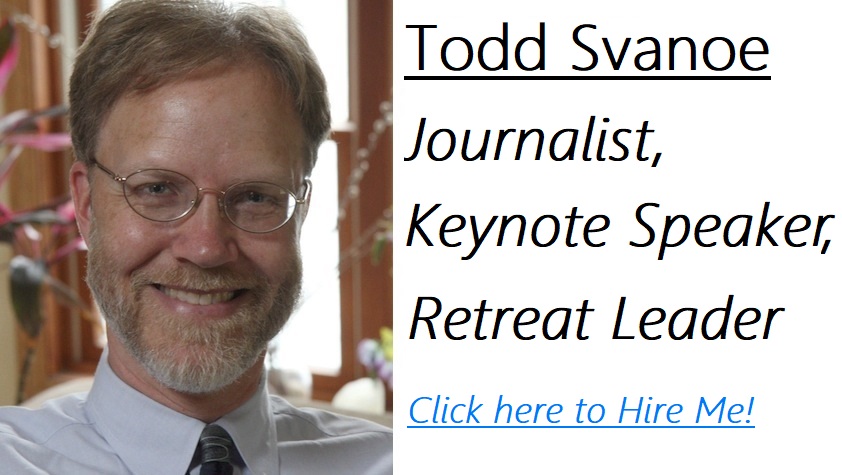
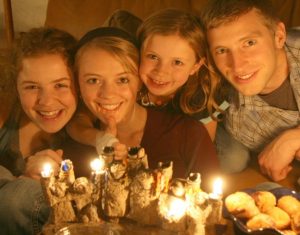
I’m excited to find this page. I need to to thank you for ones time just for this fantastic
read!! I definitely appreciated every little bit of it and i also have you saved to favs to look at new stuff on your website.